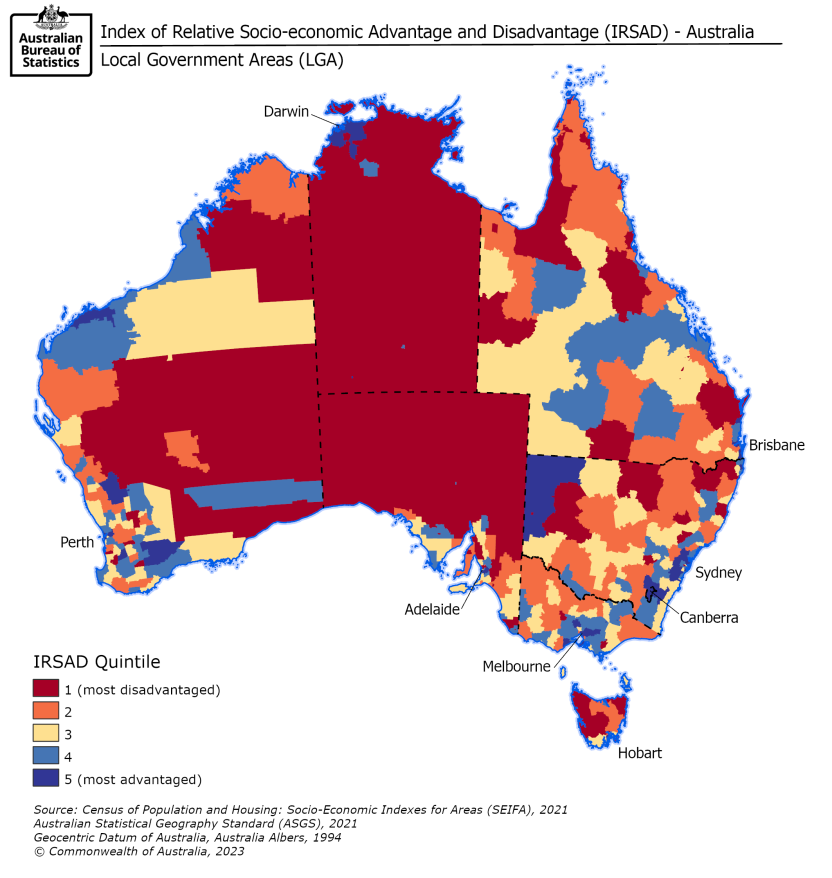Rank | LGA | Population | State |
|---|---|---|---|
1 | Woollahra | 53,496 | New South Wales |
2 | Mosman | 28,329 | New South Wales |
3 | Ku-ring-gai | 124,076 | New South Wales |
4 | Darwin Waterfront Precinct | 293 | Northern Territory |
5 | North Sydney | 68,950 | New South Wales |
6 | Waverley | 68,605 | New South Wales |
7 | Lane Cove | 39,438 | New South Wales |
8 | Peppermint Grove | 1,597 | Western Australia |
9 | Nedlands | 22,132 | Western Australia |
10 | Cottesloe | 7,970 | Western Australia |
a. Census 2021 Usual Resident Population
Rank | LGA | Population | State |
|---|---|---|---|
1 | Woorabinda | 1,019 | Queensland |
2 | Cherbourg | 1,194 | Queensland |
3 | Belyuen | 149 | Northern Territory |
4 | West Daly | 2,973 | Northern Territory |
5 | Yarrabah | 2,505 | Queensland |
6 | Kowanyama | 1,079 | Queensland |
7 | Wujal Wujal | 276 | Queensland |
8 | East Arnhem | 8,778 | Northern Territory |
9 | Doomadgee | 1,387 | Queensland |
10 | Central Desert | 3,591 | Northern Territory |
a. Census 2021 Usual Resident Population
SEIFA – Index of Relative Socio-economic Advantage and Disadvantage (IRSAD) Quintiles for all LGAs
Image

Description
A map of all LGAs in Australia. Every LGA is coloured in one of 5 colours (red, orange, yellow, light blue, and dark blue). Each colour represents a different quintile score from the Index of Relative Socio-economic Advantage and Disadvantage (IRSAD). LGAs with a score of 1, are coloured red and represent the most disadvantaged LGAs in Australia, LGAs with a score of 2 are coloured orange and are less disadvantaged than those with a score of 1, those with a score of 3 are coloured yellow and represent LGAs less disadvantaged than those with a score of 2, and so on up through a score of 4 coloured light blue, and a score of 5 coloured dark blue representing the most advantaged LGAs.
SEIFA 2021 includes data cubes for a range of geographies. It links to Methodology, a Technical Paper discussing how SEIFA is created, and a Media Release. Interactive maps will be added on 9 May 2023. SEIFA data is also available in TableBuilder.